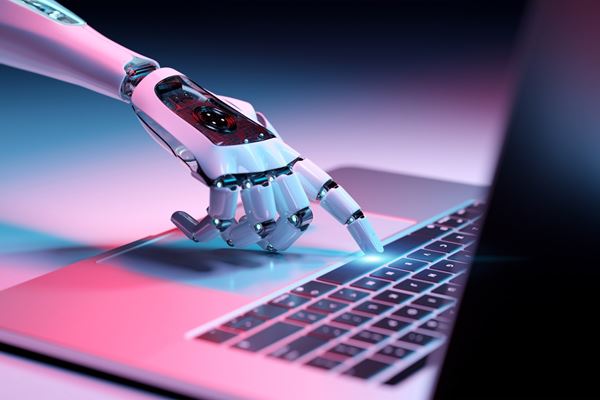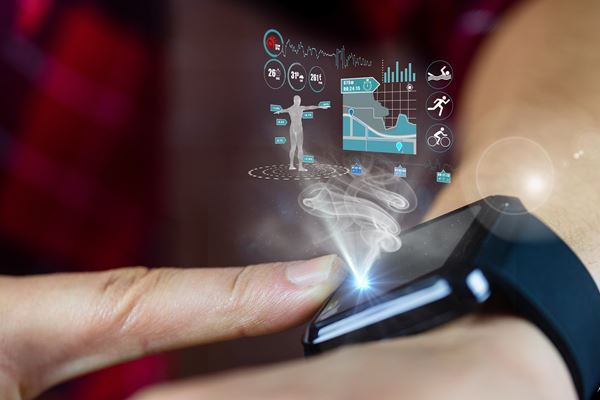Facial Recognition Technology: How It Works, Types, Accuracy, and Ethical Concerns

Facial recognition technology is a type of biometric authentication that uses facial characteristics to identify or verify an individual. It works by mapping and measuring facial features from a digital image or video frame against a database of known faces to find a match.
Facial recognition technology works by breaking down a person's face into a bunch of tiny details, like the distance between their eyes, the shape of their nose, and the pattern of wrinkles around their mouth. It then compares these details to a giant library of faces it has stored in its memory.
How Does Facial Recognition Technology Work
Face Detection
The initial step in facial recognition technology is to detect and isolate faces within an image or video frame. Advanced algorithms are employed to identify patterns and shapes resembling human faces. This stage ensures that the subsequent analysis focuses solely on facial features.
Facial Feature Extraction
Once a face is successfully detected, the algorithm proceeds to extract unique features from the facial image. These features encompass various aspects, including the distance between the eyes, the shape of the nose, the contour of the lips, and the pattern of wrinkles around the mouth. These details collectively form a distinctive facial signature.
Facial Feature Matching
The extracted facial features are then compared to a comprehensive database of known facial features. To achieve this, facial recognition algorithms employ sophisticated mathematical techniques to calculate the similarity between the features extracted from the analyzed face and those stored in the database. Key factors involved in this process include:
- Distance Between Facial Landmarks: Measuring the distance between critical facial landmarks, such as the eyes, nose, and mouth, provides critical information for distinguishing individuals.
- Shape and Contour of Facial Features: The unique shape and contour of facial elements, such as the nose, lips, and jawline, further contribute to the distinctiveness of each person's face.
- Skin Texture and Wrinkles: Although subtler, skin texture and wrinkles can also be utilized to enhance the accuracy of facial recognition.
Identification or Verification
Based on the similarity score calculated during the feature-matching process, the facial recognition algorithm determines whether the analyzed face matches a known individual or remains unidentified. If the similarity score surpasses a predefined threshold, the face is identified as belonging to the person in the database. Conversely, the face is classified as unknown if the score falls below the threshold.
Types of Facial Recognition Algorithms
Facial recognition algorithms can be categorized into two main types: feature-based algorithms and holistic algorithms.
Feature-Based Algorithms
Feature-based algorithms focus on extracting and matching specific facial features, such as the relative positions of facial landmarks and distinctive attributes. These algorithms excel at recognizing faces even in challenging conditions, such as poor lighting or partial occlusion.
Holistic Algorithms
Holistic algorithms treat the entire face as a single image and leverage statistical methods to compare faces. They are particularly effective in handling variations in facial expression and lighting, making them a preferred choice for applications where image quality may be suboptimal.
Accuracy and Challenges in Facial Recognition Technology
Facial recognition technology has made impressive strides in achieving high accuracy rates, with some algorithms boasting success rates exceeding 99%. However, it is not without its challenges, which include:
Image Quality
The quality of the input image significantly impacts the accuracy of facial recognition. Low-quality images, often obtained from surveillance cameras, can hinder the algorithm's ability to correctly identify faces.
Variations in Facial Appearance
Facial recognition may encounter difficulties when faced with variations in facial appearance caused by factors such as facial expressions, aging, or changes in lighting conditions. These variations can alter the facial features used for identification.
Database Biases
Facial recognition algorithms can exhibit biases if trained on datasets that are not representative of the overall population. This bias can result in inaccuracies, especially when recognizing individuals from underrepresented groups.
Privacy and Ethical Concerns
The widespread adoption of facial recognition technology has also raised significant ethical concerns concerning privacy and mass surveillance. China has implemented facial recognition technology into almost every facet of a person’s daily life. While this does provide security and convenience, it has significant implications for privacy.
The Chinese government has actively promoted and implemented this technology to achieve a range of objectives. In terms of public safety and security, facial recognition is extensively used for surveillance, law enforcement, and monitoring in public spaces and transportation hubs. It aids in identifying suspects and enhancing overall safety. Moreover, access control and security in buildings, hotels, and residential complexes have been streamlined through facial recognition, replacing traditional methods like keycards and PIN codes. Chinese cities have also adopted this technology for ticketless access to public transportation, allowing passengers to enter subways and buses with facial scans. In education, facial recognition is employed for automated attendance tracking, reducing administrative tasks for educators.
Additionally, China has made significant strides in integrating facial recognition into its mobile payment systems. This innovation allows users to make secure transactions by linking their facial data to their financial accounts. Retailers have capitalized on this technology for marketing, tailoring advertisements and product recommendations based on customer demographics. It's even used in healthcare for patient identification and medical record access, streamlining healthcare services. Furthermore, at border control points and immigration checkpoints, facial recognition expedites entry and exit procedures, enhancing the efficiency of travel processes.
Notably, China is developing a social credit system that incorporates facial recognition as a tool for tracking and assessing individuals' behavior, influencing social credit scores based on various factors. Despite its myriad applications and advantages, the extensive use of facial recognition in China has prompted debates and concerns surrounding privacy, surveillance, and potential misuse. While there are certainly benefits to using facial recognition technology at this scale, it also makes it nearly impossible to go about your day without having your moment-by-moment activity tracked and recorded for uses you know of and don’t know of.
Recap: Privacy and Ethical Concerns
Privacy Intrusion
The ability to identify individuals without their consent has prompted concerns about privacy infringement and the potential for misuse.
Mass Surveillance
The deployment of facial recognition in public spaces has ignited debates about the prospect of a society under constant surveillance, where individuals may feel scrutinized in their daily lives. The capacity to track people's movements and activities using facial recognition technology has provoked anxieties about mass surveillance and its potential for abuse.
Algorithmic Biases
Facial recognition algorithms may display biases based on factors such as race, gender, and age, potentially leading to unfair outcomes and reinforcing societal prejudices.
Lack of Transparency
Many facial recognition algorithms are proprietary and lack transparency, making it challenging to assess their fairness and accuracy. This opacity raises questions about accountability and oversight.
Data Breaches
Facial recognition data is highly sensitive and can be exploited to monitor individuals' activities and whereabouts without their knowledge or consent. Any breach or misuse of this data can have far-reaching consequences.
Misidentification
Facial recognition is not infallible, and false positives can lead to mistaken identity. Such misidentifications can result in unwarranted scrutiny, loss of privacy, and even harm to individuals.
Conclusion
Facial recognition technology represents a powerful tool with remarkable potential in various fields. It relies on intricate algorithms to analyze and compare facial features for identification and verification. While its accuracy has improved significantly, it is not without challenges, including issues related to image quality, variations in facial appearance, database biases, and privacy concerns.
The ethical considerations surrounding facial recognition are particularly complex, encompassing privacy infringement, mass surveillance, algorithmic biases, and the need for transparency and accountability. Striking a balance between harnessing the technology's advantages and addressing its drawbacks is essential to ensure responsible and ethical use in a rapidly evolving digital landscape.
Our experts are ready to help.




